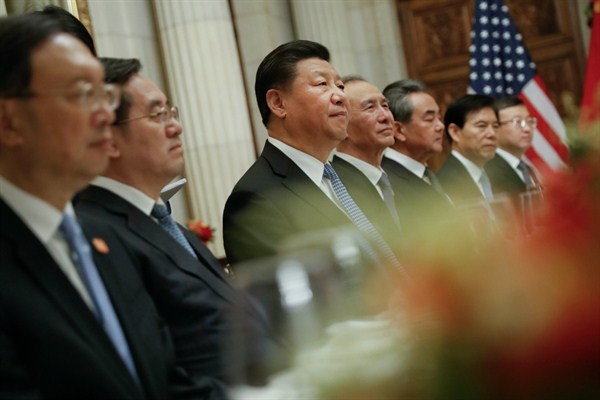As widely expected, U.S. President Donald Trump and his Chinese counterpart Xi Jinping declared a truce in their trade war over dinner in Buenos Aires this past weekend. According to the White House statement after the meeting, Xi committed to increase imports of American agricultural and energy products to reduce the bilateral trade deficit and to immediately begin negotiations over China’s unfair trade policies. In exchange, Trump agreed that he would not increase tariffs from 10 percent to 25 percent on $200 billion in Chinese exports as scheduled on Jan. 1, but that he could do so later if there is no broader agreement within 90 days. The Chinese statement was not so specific, saying only that it would import more from the U.S. and that the two countries would “work together to reach a consensus on trade issues,” with no mention of a deadline. Vagueness plus a tight U.S. deadline virtually guarantee that this is only a temporary truce.
This should all sound very familiar. Indeed, I’m tempted to say that it is déjà vu all over again, again. On three prior occasions, Trump administration officials announced similar deals to increase American exports and address trade barriers in China. In the most recent instance, at the end of May, chief economic adviser Larry Kudlow announced that the administration had reached a deal that would avoid the imposition of tariffs over China’s unfair trade practices, following an investigation under Section 301 of the 1974 Trade Act. He claimed that Chinese negotiators had agreed to reduce the trade deficit by at least $200 billion, and “just as important, they have to lower their tariff rates, they have to lower their non-tariff barriers. We have to have a verifiable process whereby the technology transfers and the theft of intellectual property stops.”
Chinese officials, however, denied that there had been a specific commitment to reduce the bilateral deficit and, after criticism that the deal did not address fundamental issues in the relationship, Trump reversed course and imposed 25 percent tariffs on $50 billion in Chinese exports. After China retaliated with tariffs against an equivalent amount of U.S. exports, the administration escalated the trade war, adding 10 percent levies on another $200 billion in Chinese imports, which were scheduled to increase to 25 percent at the beginning of next year. When China again retaliated, Trump threatened to raise the 10 percent tariffs to 25 percent and possibly impose tariffs on the remaining $267 billion in Chinese exports. The latter threat is in abeyance as a result of Saturday’s deal, but for how long?

